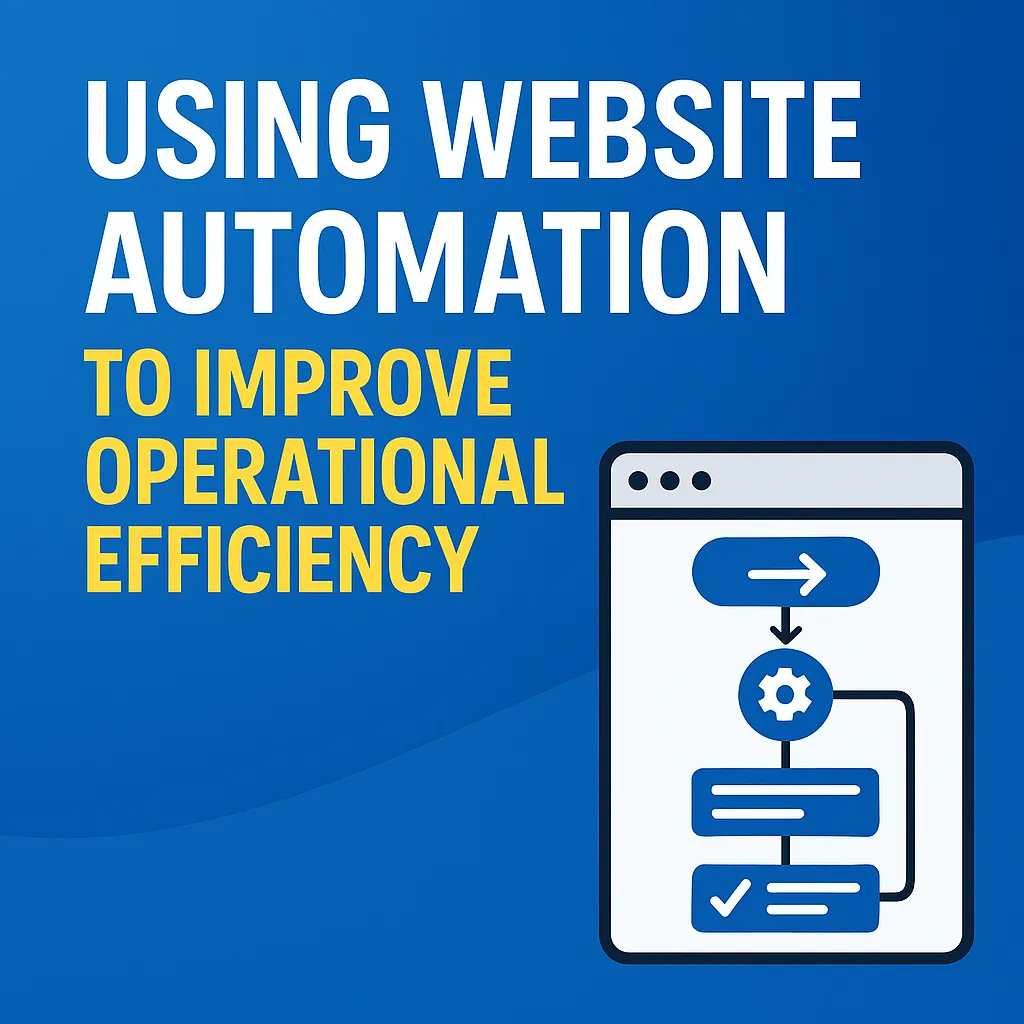
How Website Automation Boosts Operational Efficiency: Strategies, Tools & Real Examples
Using Website Automation to Improve Operational Efficiency
SEO Title:
How Website Automation Boosts Operational Efficiency: Strategies, Tools & Real Examples
Meta Description:
Discover how website automation can reduce costs, boost productivity, and scale your business operations. Learn tools, tactics, and real-world steps to get started.
Introduction to Website Automation and Operational Efficiency
Every minute your team spends repeating a manual task is a minute not spent on strategic growth. In today’s digital-first economy, inefficiencies rooted in manual workflows cost businesses time, money, and competitiveness.
According to McKinsey, up to 45% of work activities can be automated using current technology—opening major opportunities to improve productivity.
This is where website automation enters the picture.
Website automation uses software tools to reduce or eliminate manual tasks tied to website operations and customer interactions. When executed properly, it improves scalability, reduces errors, and boosts operational performance.
In this guide, you’ll learn:
What website automation is
Why it’s critical for modern businesses
Tools and strategies to streamline workflows
Common mistakes to avoid
Step-by-step instructions to implement automation today
What is Website Automation?
Website automation is the process of using software to perform tasks on your website without manual input. These tasks range from capturing leads and sending follow-ups to managing bookings, syncing data, and analyzing traffic.
Rather than requiring team members to handle every task by hand, automation allows your systems to operate around the clock—with consistency and minimal oversight.
Core Concepts of Website Automation
Workflow Automation: Automatically perform multiple steps after a trigger, such as a user submitting a form or making a purchase.
Data Synchronization: Ensure customer data flows between your CRM, website, and email systems.
Trigger-Based Responses: Send messages or take action based on user behaviors.
Platform Integration: Link your website with marketing, analytics, and backend tools.
How Website Automation Has Evolved
Previously reserved for large organizations, website automation is now accessible to small businesses, thanks to low-code and no-code platforms.
Business owners can now automate lead nurturing, data management, and customer engagement using tools like:
Go HighLevel
ClickUp
Notion
Google Analytics
Google Search Console
These platforms remove the complexity of building automated systems, making it easier to run lean, agile operations.
Why Website Automation Matters for Business Growth
Improved Profitability
Automation reduces reliance on manual labor, freeing up team resources to focus on high-value tasks. This leads to better margins and faster returns on investment.
Scalability Without Headcount
You can grow your business without growing your workforce. Automated workflows handle higher volumes of tasks without added stress or cost.
Real-Time Insights
Tools like GA4 and Search Console enable data-driven decision-making, giving you timely feedback on performance and areas to improve.
Competitive Edge
Businesses that automate can adapt faster to market changes, outperform slow competitors, and deliver faster, more consistent customer experiences.
Example: An eCommerce brand boosted sales by 28% using automated cart recovery emails and segmented marketing via Go HighLevel.
Step-by-Step Strategy for Implementing Website Automation
1. Identify Automation Opportunities
Look for high-frequency, repetitive tasks such as:
Contact form submissions
Appointment scheduling
Blog publishing
Email follow-ups
Customer onboarding
Lead routing
2. Select the Right Automation Tools
Go HighLevel: All-in-one CRM, marketing automation, landing pages
ClickUp or Notion: Task planning, content workflows, templates
Google Analytics & Search Console: Monitor performance
Namecheap & Cloudflare: Manage domain performance and security
3. Build Workflows
Use trigger-action-response logic to automate how visitors interact with your site. For example, a form submission might:
Add the user to a CRM list
Trigger an email sequence
Assign a team member for follow-up
4. Integrate Data and Lead Scoring
Connect your CRM with other tools and use lead scoring to prioritize high-value contacts automatically.
5. Monitor and Refine
Review analytics dashboards to measure performance. Adjust automations based on engagement, conversion rates, and operational KPIs.
Common Mistakes to Avoid
Automating the Wrong Processes: Don’t waste time automating what doesn’t matter. Focus on tasks with high repetition and impact.
Overcomplicating Workflows: Keep automation flows simple and testable.
Skipping Testing: Always test workflows in a controlled environment before going live.
Neglecting Human Oversight: Automation complements—not replaces—humans. Regular reviews are essential.
Getting Started: A Practical Checklist
Choose your main CRM (e.g., Go HighLevel)
List and map your repetitive tasks using Notion or ClickUp
Set up integrations between key tools: Google Analytics, Namecheap, Cloudflare
Create automated workflows based on customer journeys
Monitor results weekly and optimize monthly
Frequently Asked Questions
Q: What tasks can websites automate?
A: Lead generation, contact forms, appointment scheduling, blog updates, follow-ups, and data syncing.
Q: How much time or cost can I save?
A: Businesses often save up to 60% on admin time and reduce costs by 30–40% within six months.
Q: Do I need to know how to code?
A: No. Most modern tools like Go HighLevel are designed for non-developers and offer drag-and-drop builders.
Conclusion
Website automation is no longer optional—it's essential for businesses that want to operate lean, scale fast, and outperform competitors. From task automation to customer journeys and analytics, today's tools make implementation easier than ever.
Start small, automate what matters, and grow with confidence.
